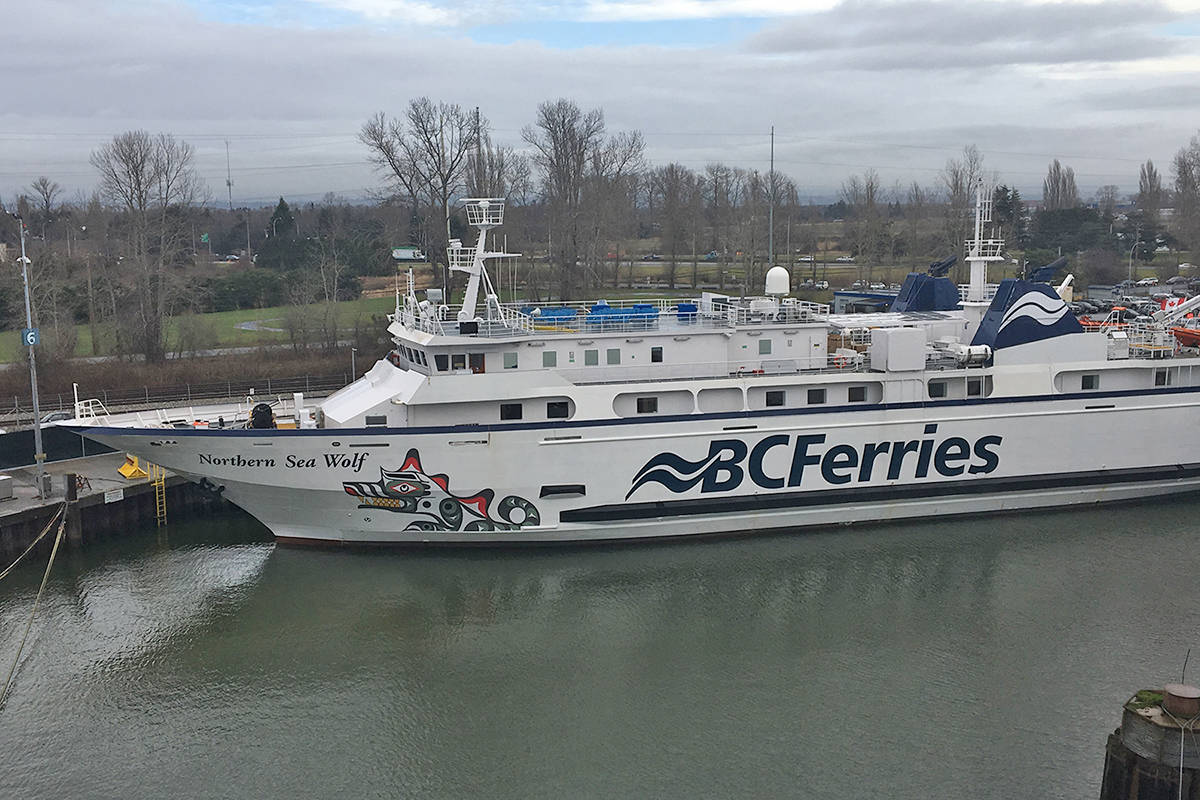Members of the Cariboo Chilcotin Coast Tourism Association are looking forward to what the future holds for the industry in light of recent key agreements, opportunities and partnerships in several avenues of interest.
There is the much-anticipated arrival of BC Ferries’ Northern Sea Wolf ferry — aimed to replace the current Nimpkish and to serve a daytime route between Port Hardy and Bella Coola — which has yet to complete its sea trials and final inspections from Transport Canada.
Amy Thacker, CEO with the Cariboo Chilcotin Coast Tourism Association, said everyone is cautiously optimistic it will meet its scheduled arrival date this summer where the Northern Sea Wolf will take over the mid-coast connector service now served by the Nimpkish ferry. The connector service sees ferries stop at Bella Bella, Shearwater and Ocean Falls.
“That’s one of the key pieces in developing and growing economically [in the region] and it’s double the capacity of the Nimpkish. It’ll manage the flow of visitors a little better in that it’s a reasonable amount of people in and out of our small communities.
“It will definitely help for volume for Bella Coola and Highway 20 and what it does economically from a business perspective when you have that kind of connectivity is it allows business operators to plan over a longer period of time.”
Thacker said Bella Coola is close to capacity in the fall during grizzly bear viewing season, however, added some operators struggle during other months of the year.
“Having the circle route in B.C. with a more modern, faster vessel means people can go directly from Port Hardy to Bella Coola,” she said. “It’ll be about a 10.5-hour trip. For visitors or travelers wanting to do the circle route in B.C. they can leave either Port Hardy or Bella Coola and enjoy that iconic, scenic route and arrive in their community destination in daylight to explore, get settled into their accommodations and have a meal. It’s much better suited to the visitor experience.”
With the broader appeal of the voyage, Thacker said operators will have a tourism season from May through to October with ongoing traffic.
“The demand for bookings is strong on this route,” said Tessa Humphries, B.C. Ferries’ communications manager. “There is wait-list space available on most sailings [on the Nimpkish], which as explained will be converted to confirmed bookings in mid-April once the Northern Sea Wolf testing is complete.”
Plans initially called for Northern Sea Wolf to be in service in June 2018, but work took longer than expected. Another ferry was put into service in 2018.
The ferry project cost jumped to $64 million from its originally approved $55.7 million budget, said a report by Blair Redlin for the provincial government. The report is dated June 30, 2018, but improvements have continued on the ferry, which was 17 years old when it was purchased in Greece in 2017 for $12.6 million.
The 246-foot Northern Sea Wolf has been in shipyards, first in Victoria and then in Richmond. B.C. Ferries said it is optimistic it will be ready by June 3 for resumption of direct service.
Sea trials and systems testing are slated for the first two weeks of April. Crew training takes place mid-April to mid-May, along with Transport Canada testing.
Once testing is finished in April and B.C. Ferries is confident Northern Sea Wolf will go into service on June 3, people on the wait-list will receive a reservation.
It is anticipated that on May 18, Northern Sea Wolf will take over the mid-coast connector service now served by the Nimpkish ferry.
The connector service sees ferries stop at Bella Bella, Shearwater and Ocean Falls.
Indigenous based tourism will be strengthened by a memorandum of understanding signed between Cariboo Chilcotin Coast Tourism Association (CCCTA) and Indigenous Tourism BC (ITBC).
With the signing of the MOU, at the B.C. Tourism Industry Complex in Vancouver late February, both parties are pledging to collaborate on promoting the growth of Indigenous tourism within the region.
“There are exceptional Indigenous experiences, an abundance of cultural sharing opportunities and untapped potential to support a thriving Indigenous tourism economy in the Cariboo Chilcotin Coast,” said Amy Thacker, the CEO of the CCCTA.
“I am thrilled with today’s memorandum of understanding signing and what it means to those businesses and entrepreneurs looking to support their families and way of life.”
Both the CCCTA and ITBC agree the terms of the MOU will be an excellent way for them to cross-promote one another’s programs and initiatives.
By shining a light on Indigenous based tourism in the region, the CCCTA believes non-Indigenous tourism will also be revealed, with both parties agreeing this will highlight the importance of collaboration between tourism experiences. Through leveraging one another’s resources and sharing local culture and history, both parties hope to foster a sustainable visitor economy throughout the region.
“This MOU shows a high level of trust between ITBC and CCCTA, and reflects the spirit of a genuine strategic partnership for the benefits of the Indigenous communities and entrepreneurs in the Cariboo Chilcotin Coast region,” said Brenda Baptiste, chair of ITBC.
“This includes the development of world-class Indigenous tourism experiences that will attract more visitors to the region.”
The MOU was developed to more clearly define the relationship and partnership between ITBC and CCCTA when it comes to expanding the Indigenous tourism and Non-Indigenous tourism sectors by supporting communities to individual entrepreneurs while they develop new product and programming.
Key to this new partnership will be the establishment of the role of Indigenous tourism specialist for the Cariboo Chilcotin Coast Region.
This full-time role will be based out of Williams Lake, with the person who takes the job overseeing the execution of all the terms of the MOU.
This includes engaging with regional First Nations communities and entrepreneurs, the implementation of priority projects, acquisition of content for marketing activities, advancement of training and product development programs and a variety of other responsibilities.
“We’re very excited about this and have been working for a long time to formalize the partnership,” Thacker said.
“The MOU builds on that ongoing collaboration and will allow us to bring Indigenous specialists to the region that will work not only with our Indigenous communities to grow their tourism products and experiences, but also with our non-Indigenous operators to understand how to work collaboratively.
“We’re really reaching both ways to strengthen and support our neighbours and our regions and culture. It hits all our values and we’re excited to be moving forward in a bigger way.”

